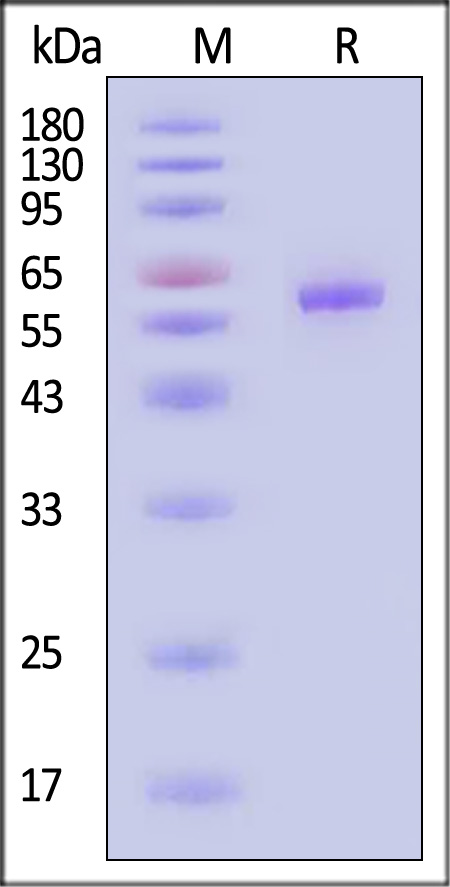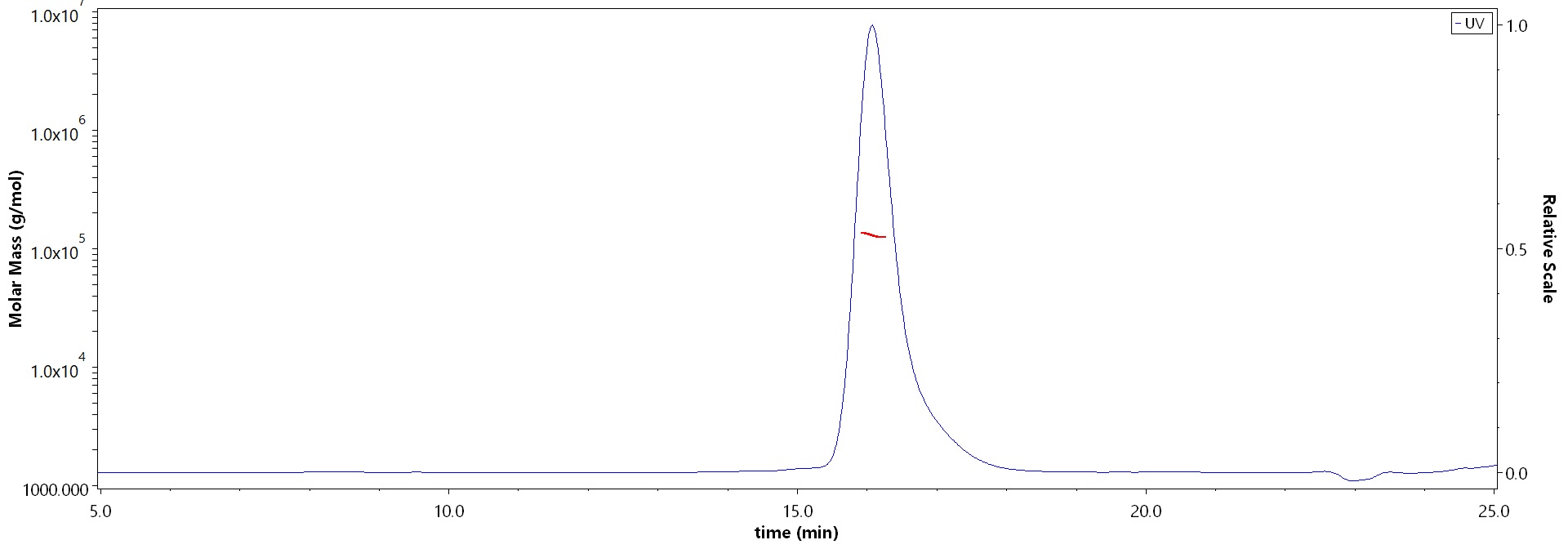分子别名(Synonym)
CPPI, DPP-I, DPP1, DPPI, HMS, JP, JPD, PALS, PDON1, PLS
表达区间及表达系统(Source)
Human Cathepsin C Protein, His Tag (CAC-H52H3) is expressed from human 293 cells (HEK293). It contains AA Asp 25 - Leu 463 (Accession # P53634-1).
Predicted N-terminus: Asp 25
Request for sequence
蛋白结构(Molecular Characterization)

This protein carries a polyhistidine tag at the C-terminus.
The protein has a calculated MW of 51.4 kDa. The protein migrates as 60-65 kDa when calibrated against Star Ribbon Pre-stained Protein Marker under reducing (R) condition (SDS-PAGE) due to glycosylation.
内毒素(Endotoxin)
Less than 1.0 EU per μg by the LAL method.
纯度(Purity)
>95% as determined by SDS-PAGE.
>90% as determined by SEC-MALS.
制剂(Formulation)
Supplied as 0.2 μm filtered solution in 12.5 mM MES, 75 mM NaCl, pH6.5 with glycerol as protectant.
Contact us for customized product form or formulation.
运输(Shipping)
This product is supplied and shipped with dry ice, please inquire the shipping cost.
存储(Storage)
Please avoid repeated freeze-thaw cycles.
This product is stable after storage at:
- The product MUST be stored at -70°C or lower upon receipt;
- -70°C for 3 months under sterile conditions.
电泳(SDS-PAGE)

Human Cathepsin C Protein, His Tag on SDS-PAGE under reducing (R) condition. The gel was stained with Coomassie Blue. The purity of the protein is greater than 95% (With Star Ribbon Pre-stained Protein Marker).
SEC-MALS

The purity of Human Cathepsin C Protein, His Tag (Cat. No. CAC-H52H3) is more than 90% and the molecular weight of this protein is around 120-140 kDa verified by SEC-MALS.
Report
活性(Bioactivity)
Measured by its ability to cleave the fluorogenic peptide substrate, Gly-Arg-7-amido-4-methylcoumarin (GRAMC). The specific activity is >5000 pmol/min/µg (QC tested).
Protocol
背景(Background)
This gene encodes a member of the peptidase C1 family and lysosomal cysteine proteinase that appears to be a central coordinator for activation of many serine proteinases in cells of the immune system. Alternative splicing results in multiple transcript variants, at least one of which encodes a preproprotein that is proteolytically processed to generate heavy and light chains that form a disulfide-linked dimer. A portion of the propeptide acts as an intramolecular chaperone for the folding and stabilization of the mature enzyme. This enzyme requires chloride ions for activity and can degrade glucagon. Defects in the encoded protein have been shown to be a cause of Papillon-Lefevre syndrome, an autosomal recessive disorder characterized by palmoplantar keratosis and periodontitis. [provided by RefSeq, Nov 2015]























































 膜杰作
膜杰作 Star Staining
Star Staining











